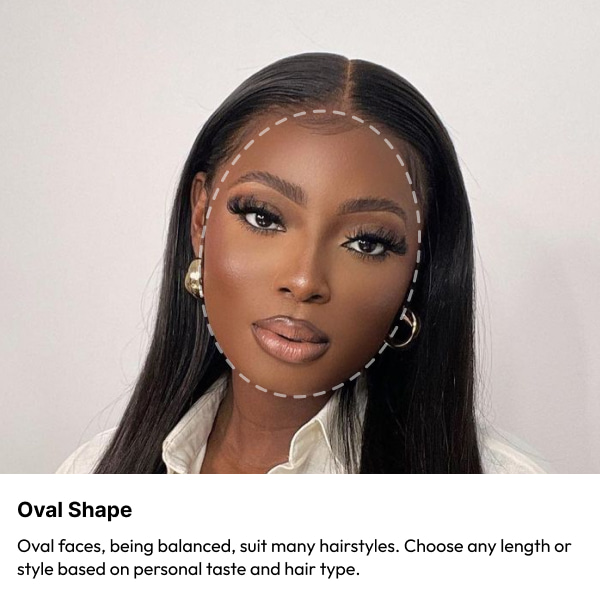
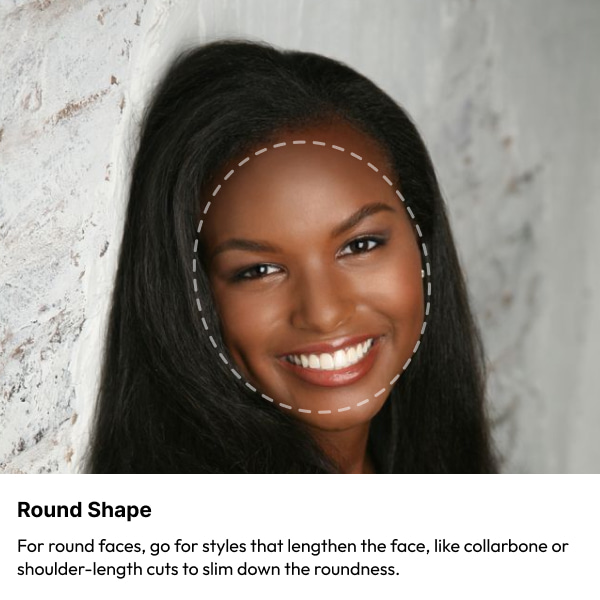
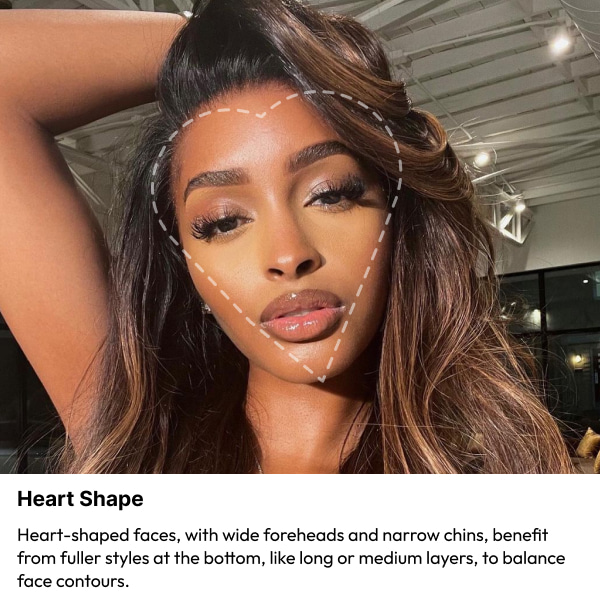
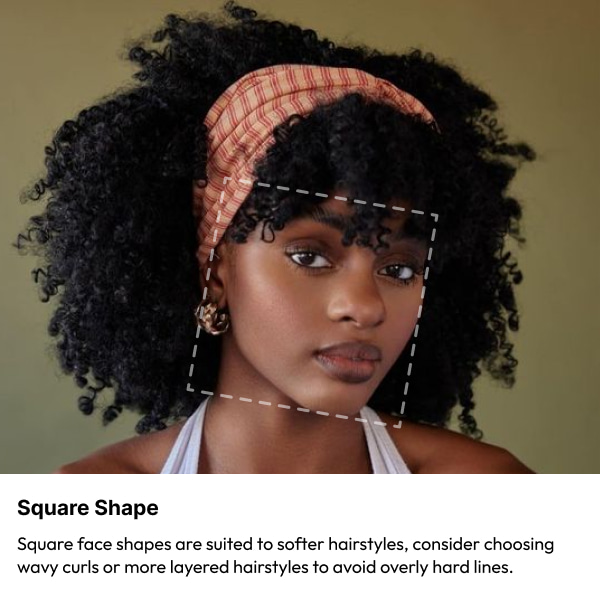
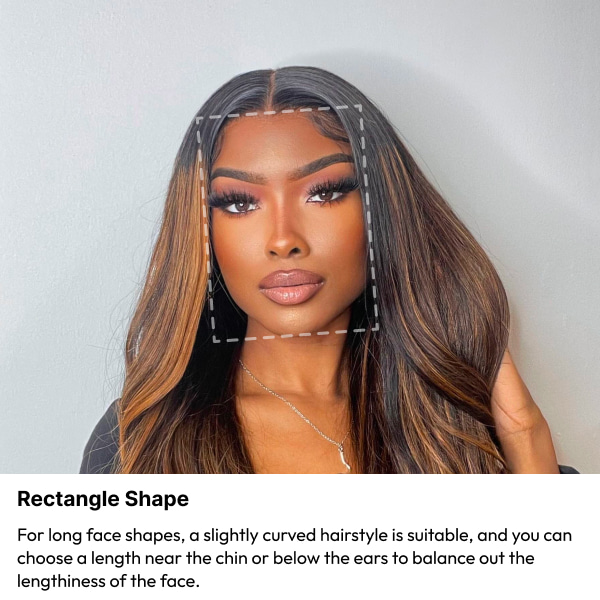
How do I choose a wig for my face shape and hair style?
Introduction
Choosing the right wig involves more than just selecting a color and style you like. Your face shape plays a significant role in determining which wig will look the most flattering. This guide helps you choose a wig that complements your face shape and desired hairstyle, ensuring a natural and beautiful look.
Understanding Face Shapes
Identifying your face shape is the first step in choosing a wig that enhances your features. Here are the main face shapes:
-
- Oval: Balanced proportions with a slightly narrower jawline than the temples.
-
- Round: Equal width and height with a rounded jawline and hairline.
-
- Square: Broad forehead and jawline with similar widths.
-
- Heart: Wider forehead with a narrower chin and prominent cheekbones.
-
- Diamond: Narrow forehead and chin with wider cheekbones.
-
- Oblong/Rectangle: Longer than it is wide with a long, straight cheek line.
Wigs for Different Face Shapes
1. Oval Face Shape
Characteristics: Oval faces have balanced proportions, making them versatile for many hairstyles.
Recommended Styles:
-
- Almost Any Style: Short, long, straight, wavy, or curly wigs all work well.
-
- Layered Styles: Add volume and movement.
-
- Bobs and Lobs: Classic styles that highlight your natural balance.
2. Round Face Shape
Characteristics: Round faces have full cheeks and a rounded jawline.
Recommended Styles:
-
- Long Layers: Lengthen the appearance of the face.
-
- Side Parts: Create an asymmetrical look to elongate the face.
-
- Shaggy Styles: Add texture and volume on top to balance the roundness.
-
- Wavy and Layered: Soft waves and layers create an illusion of length.
Avoid:
-
- Chin-Length Bobs: These can make your face look even rounder.
-
- Straight Bangs: Accentuate the roundness.
3. Square Face Shape
Characteristics: Square faces have a strong jawline and broad forehead.
Recommended Styles:
-
- Soft, Wispy Bangs: Soften the angles of your face.
-
- Long Layers: Add movement and reduce the boxy appearance.
-
- Wavy and Curly Styles: Create softness around the jawline.
Avoid:
-
- Straight Lines and Cuts: Can make the face look too harsh.
4. Heart Face Shape
Characteristics: Heart-shaped faces have a wider forehead and a narrow chin.
Recommended Styles:
-
- Chin-Length Bobs: Balance the forehead and chin.
-
- Side-Swept Bangs: Draw attention away from the forehead.
-
- Wavy and Curly Styles: Add width at the jawline.
Avoid:
-
- Short, Full Bangs: Emphasize the forehead too much.
5. Diamond Face Shape
Characteristics: Diamond faces have narrow foreheads and chins with wider cheekbones.
Recommended Styles:
-
- Full, Chin-Length Bobs: Add width to the forehead and chin.
-
- Layered Cuts: Soften the cheekbones.
-
- Side Parts and Deep Side Bangs: Balance the face shape.
Avoid:
-
- Too Much Volume on the Sides: Can make the face appear wider.
6. Oblong/Rectangle Face Shape
Characteristics: Oblong faces are longer than they are wide with a long, straight cheek line.
Recommended Styles:
-
- Soft, Curly, or Wavy Styles: Add width and reduce length.
-
- Bangs: Shorten the appearance of the face.
-
- Layered Cuts: Add volume on the sides.
Avoid:
-
- Long, Straight Styles: Can elongate the face further.
Choosing a Wig Based on Hairstyle
1. Short Hairstyles
-
- Pixie Cuts: Great for heart and oval face shapes.
-
- Bob Cuts: Flattering for oval, square, and heart face shapes. Adjust the length and layers to suit your specific shape.
2. Medium Hairstyles
-
- Lobs (Long Bobs): Versatile and flattering for most face shapes.
-
- Shag Cuts: Add volume and texture, suitable for round and square face shapes.
3. Long Hairstyles
-
- Layered Cuts: Best for round and square faces to add movement.
-
- Straight Styles: Flattering for oval and diamond face shapes.
-
- Wavy Styles: Work well for all face shapes, adding softness and dimension.
Tips for a Natural-Looking Wig
1. Customize the Wig
-
- Trim and Style: Take your wig to a professional stylist to customize the cut and style to suit your face shape.
-
- Pluck the Hairline: Create a more natural hairline by plucking some hairs.
2. Choose the Right Color
-
- Match Skin Tone: Select a wig color that complements your skin tone.
-
- Add Highlights and Lowlights: For a more natural look, choose wigs with highlights and lowlights.
3. Use Makeup and Accessories
-
- Blend the Hairline: Use makeup to blend the wig’s hairline with your skin.
-
- Add Accessories: Use headbands, scarves, and hats to enhance your look and secure the wig.
4. Ensure a Secure Fit
-
- Adjustable Straps: Use adjustable straps to ensure a snug fit.
-
- Wig Grip Bands: Prevent the wig from slipping by using a wig grip band.
5. Maintain Your Wig
-
- Regular Washing and Conditioning: Keep your wig clean and conditioned to maintain its quality and appearance.
-
- Proper Storage: Store your wig on a wig stand to preserve its shape and prevent tangling.
Your questions answered
FAQs
How do I determine my face shape?
To determine your face shape, measure the width of your forehead, cheekbones, and jawline, as well as the length of your face. Compare these measurements to identify your face shape.
Can I wear any wig style regardless of my face shape?
While you can wear any wig style, certain styles will be more flattering based on your face shape. Choosing a style that complements your face shape enhances your overall look.
How do I choose the right wig color?
Select a wig color that complements your skin tone and eye color. Consider trying wigs with highlights and lowlights for a more natural appearance.
Can I style my wig with heat tools?
Human hair wigs and heat-resistant synthetic wigs can be styled with heat tools. Always use a heat protectant spray and follow the manufacturer’s guidelines.
How often should I wash my wig?
Wash your wig every 7-10 wears or when it becomes visibly dirty. Use products specifically designed for wigs to maintain their quality.
How do I secure my wig to prevent it from slipping?
Use adjustable straps, wig grip bands, bobby pins, or wig tape to secure your wig and prevent it from slipping.
